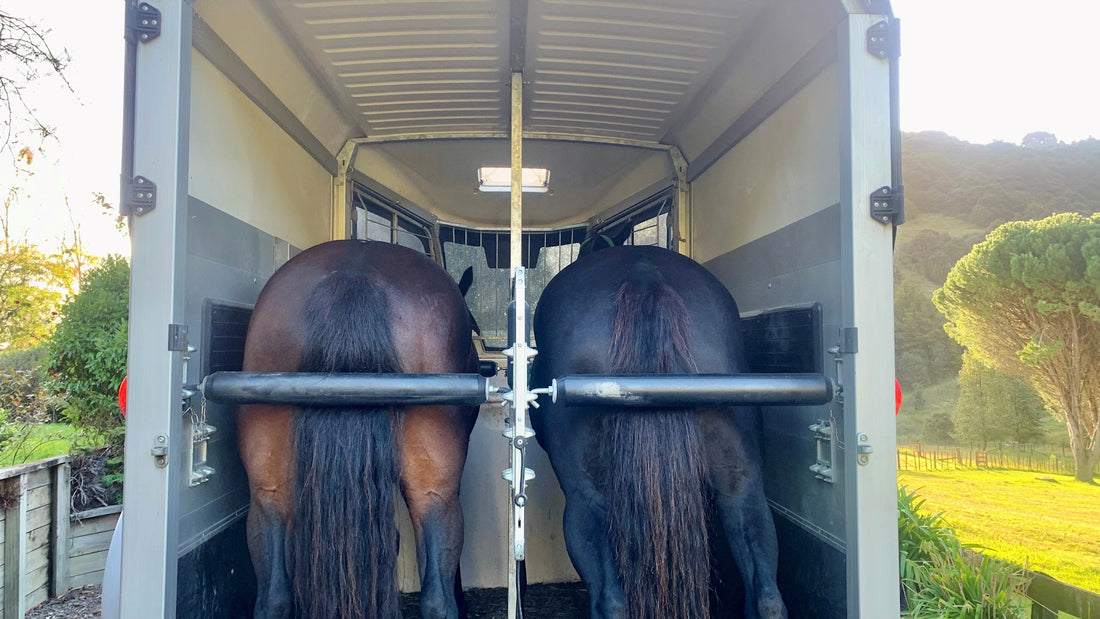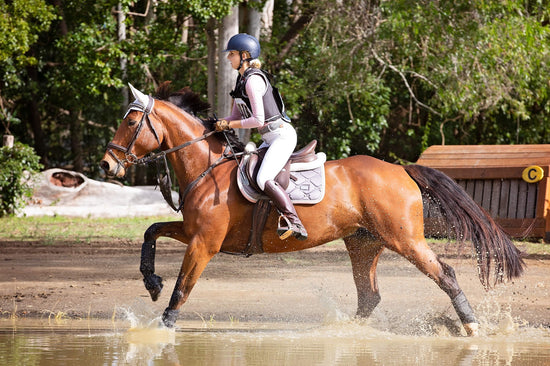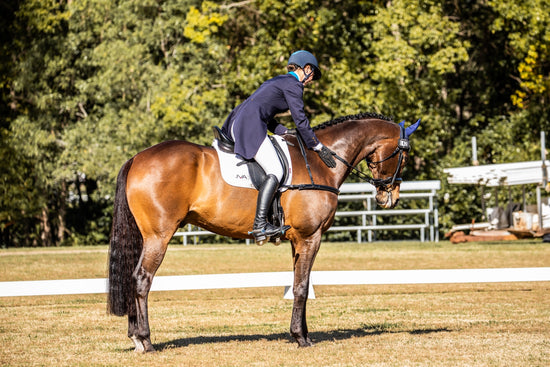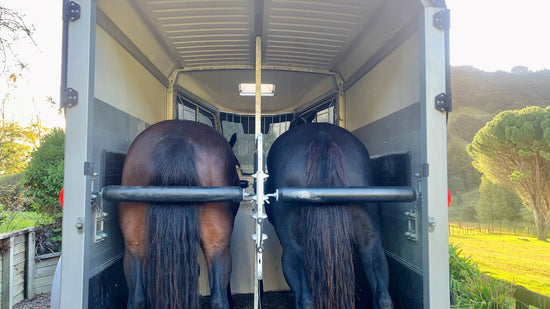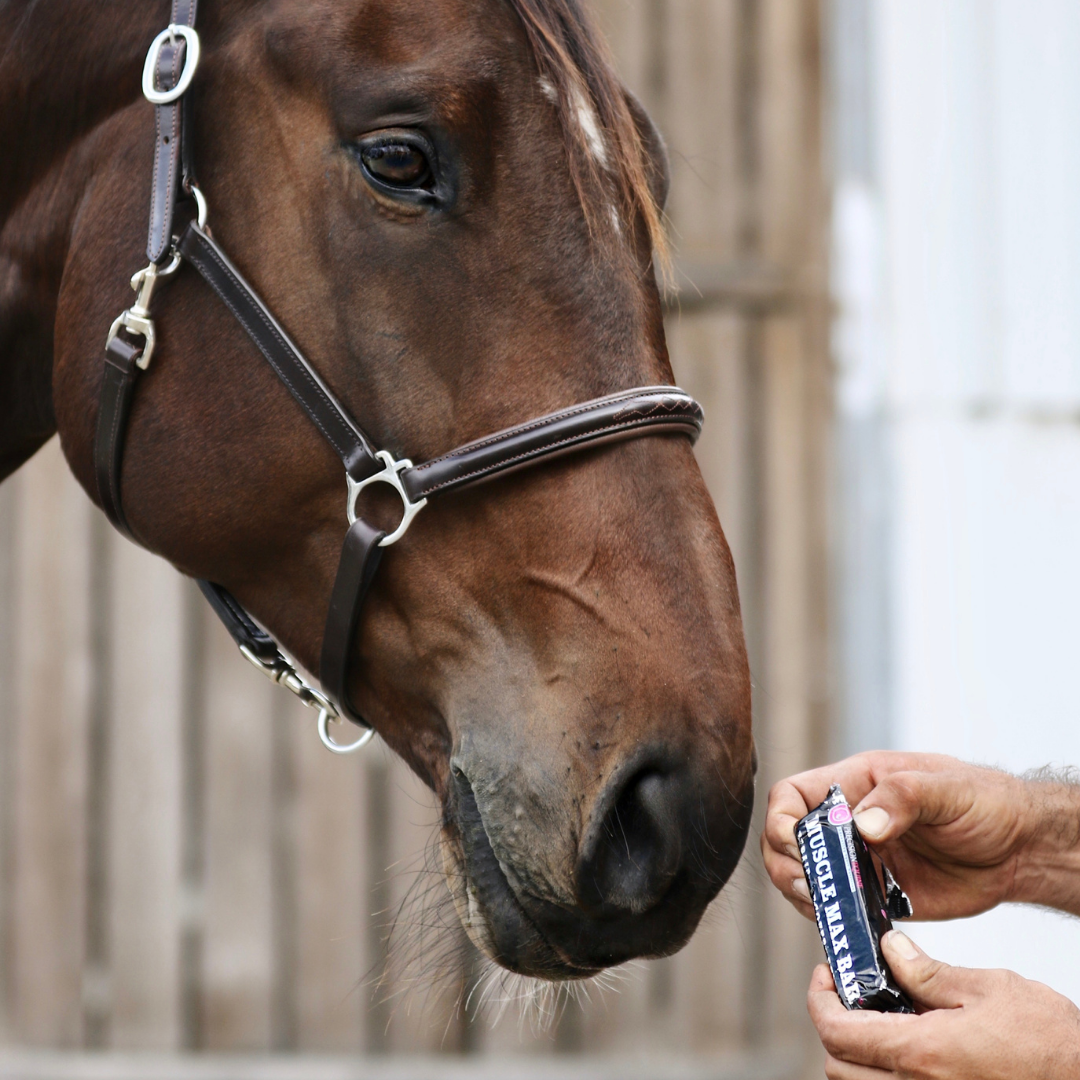It's easy to forget, but just standing quietly in a horse trailer while travelling is a workout for our horses, and especially if the travel is more than half an hour, we need to account for the energy they have used. Good balance and the ability to make postural corrections to travel in a steady position is essential to prevent injury, falls, and distress for the horse, but it is tiring and burns energy. For horses who are stressed by travel or have trouble balancing well due to physical or psychological reasons, trailer travel uses even more effort.
Horse owners are normally aware of keeping their horse hydrated, and ensuring there is airflow and the horses are cool enough. Normally we know how our horse likes to travel, if we need to feed them prior to travel, and if they have anxiety about trailering. Most equestrians also allow their horse a short recovery period after arriving at their destination.
But how many of us are mentally adding that trailer trip to the rest of the exercise the horse does that day when calculating how much rest and nutritional support they need?
Just how much energy does a horse use in trailer travel?
If you have travelled standing by train or bus, you will know the feeling of constantly adjusting your balance by flexing the muscles in your legs. Imagine that without a strap or rail to hold, and think of how winding the roads you normally travel are.
Horses become experts at controlling their large bodies under the directional forces involved in travel, but this requires both agility and energy. Slowing down carefully is crucial when driving a horse float but even a nice smooth deceleration will mean your horses legs are bracing to cope.
Massey University researchers in New Zealand created special force plate platforms in a standard horse trailer to precisely measure the horses' movement while travelling. Unsurprisingly, they found that horses move often to rebalance themselves during a trip, and that the horses legs actively work to absorb the road bumps and vibrations, as well as in response to the normal acceleration, braking, turning, and constant speeds you would expect during a typical trip.
Two horses were loaded into the special trailer and for 58 minutes were driven on a 56 km trip along a mix of country and city roads.
Vertical movement varied between the horses
The researchers added up all the vertical movement caused by small bumps and vibrations during the hour's travel and found that the vertical movement of both horses was less than the vertical movement measured in the horse trailer’s floor, which tells us that the horses used their legs to minimise the up and down movement.
- The first horse’s body moved a total of 69.55 m using 322.4 kJ,
- and the second horse's body moved 97.56m, using 443.2 kJ
- This energy used is in addition to the work done by simply standing.
It's possible that the almost ~28m of variance between the horses movement was because one was a more experienced traveller, as a horse with very stiff legs would 'bounce' (move vertically) around the same amount as the trailer. But a horse using its legs effectively as springs or shock-absorbers will stay more stable.
All this effort uses energy.
Horses in a trailer cope with a lot of sideways force too
Let's talk 'wiggle'! Without hands to brace them, horses move side to side in the horse float as we corner, and also have to brace themselves to cope with forward and backwards movement as we accelerate or slow.
- The first horse's body moved a total of 227.1 m horizontally
- while the second horse moved 243.0 m.
All of this movement has an energy cost associated to move and contract those large equine muscles.
This energy expenditure will be much higher for horses who are not practiced travellers, anxious horses, unfit horses, more winding or bumpy roads... or horses with drivers who don't focus on smooth cornering and speed changes.
The researchers hope that their effort to quantify the additional workload for horses during transport will "aid in the design of smart transport vehicles that will minimise the stress to horses" - an admirable goal.
In the meantime, you can help your horse cope with the energy load of trailer travel in four easy ways.
- Drive smoothly, and choose smooth straightt roads where possible
- Allow enough time to give your horse 10-20 minutes rest on arrival
- Give your horse some MUSCLE MAX BAR on arrival
- Add travel time into your horses exercise time for the day.
Travel well, and enjoy!
References
This study was conducted at the School of Veterinary Science, Massey University, Palmerston North, New Zealand, by G Robert Colborne, Liqiong Tang, Brooke R Adams, Brooke I Gordon, Bridie E McCabe and Christopher B Riley created a novel load cell-supported research platform to measure vertical and horizontal motion of a horse’s centre of mass during trailer transport.
Published in the Journal of Equine Veterinary Science (2021).

